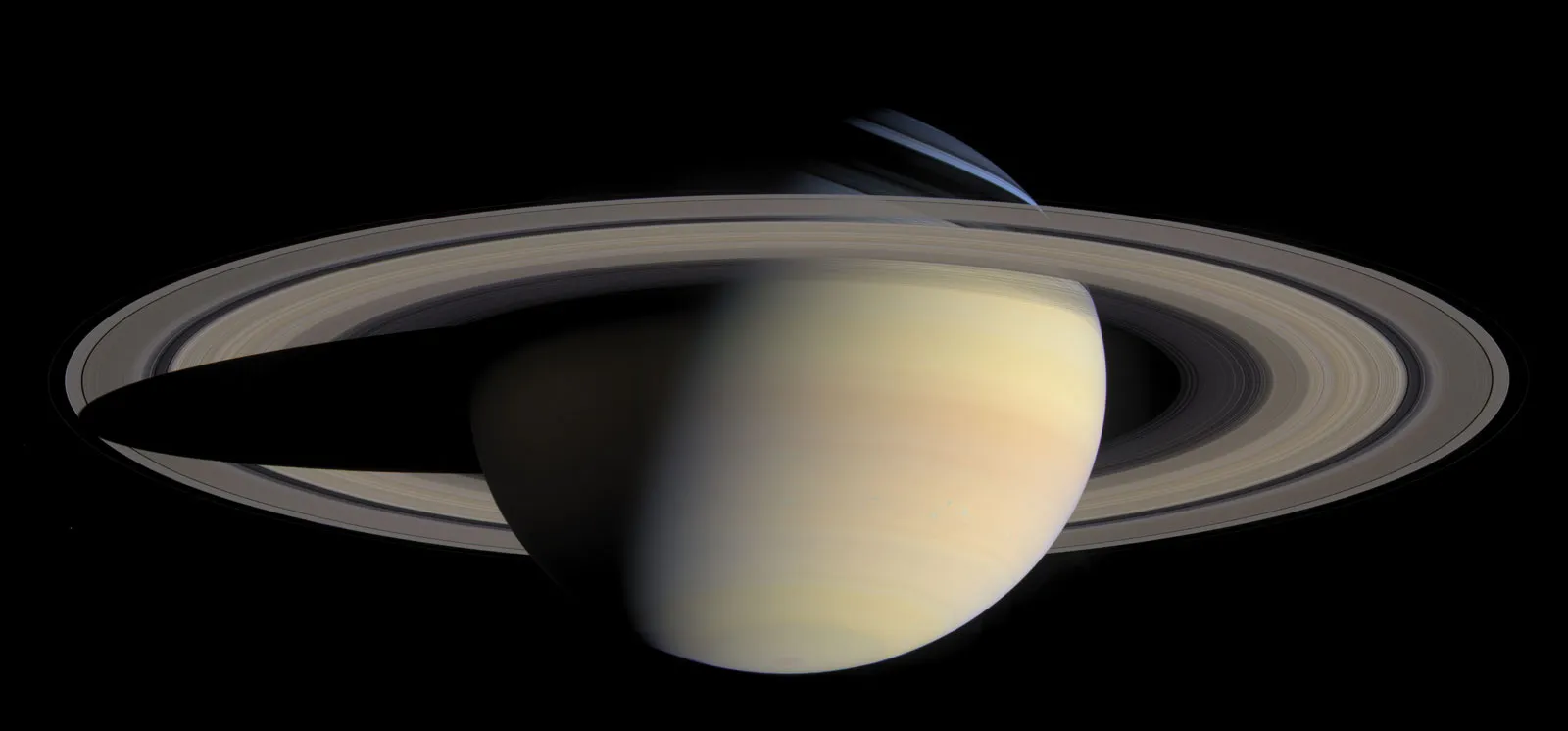There are eight planets in our solar system. But Saturn is quite a planetary gem because of its gold color and stunning rings. It is the second-largest of the eight planets and is about ten times as wide as the earth.
Physical features of Saturn
Even with its size, Saturn is the lightest planet. It is mostly made up of the gases hydrogen and helium. And because of its particular gaseous composition, Saturn is the only planet in the solar system that is less dense than water. If the planet was placed in a huge ocean, it would be able to float.
Saturn’s gaseous makeup also means that it has no true surface. At its center, the planet has a dense core of water, ice, and rocky material, but it has no actual landmass. Alternatively, it’s mostly made up of gases, liquids, and yellow ammonia crystals, that swirl around the planet, creating golden clouds and storms.
Because of Saturn’s inhospitable environment, the planet cannot support life, but some of its moons might. Saturn has more moons than the number of moons confirmed so far. Saturn’s moons may also play a role in shaping the planet’s signature feature; its rings.
How the rings of Saturn were formed
Millions of years ago, Saturn had an extra moon. It could have been 400 km wide and was formed almost entirely of ice. But this moon got destroyed, as it was orbiting just too close to resist the immense force of Saturn’s gravity.
A leading theory suggests that, just beyond Saturn’s atmosphere, an ice moon approached close to or even just inside its Roche limit. As Saturn’s huge gravitational force pulled it apart, the moon began to rupture catastrophically. A world ripped apart by its proximity to a giant. Up to seventeen thousand trillion tons of ice broke apart in orbit around Saturn, and because of the speeds, this material was traveling. Within a few days, it spread around the planet Saturn.
Saturn’s ring is now in place, but as Cassini* turned its instruments towards it, it saw a single ring. Cassini found out how Saturn’s rings have expanded.
Cassini captured images with the sun directly above the equator so that the most wonderful part of the rings emerged. It was like an infinite sheet of glamming debris.
Saturn’s ring system is the largest and most complex in the entire solar system. The rings are made of icy and rocky remnants from comets, asteroids, and moons. The particles range in size from being as small as dust to as big as mountains.
The ring system is divided into seven groups of rings.
Altogether, they are as wide as four-and-a-half Earths, but only about two-thirds of a mile thick.
How the rings can stay on track and intact has to do with Saturn’s smallest moons. Called shepherding moons, these tiny moons seem to use their gravity to shape the ring material into circular paths.
This once tiny world of rock and ice has seen the most dramatic transformations and is today the solar system’s greatest jewel. But the understanding of Saturn as the mission is not yet over. It is far from over.
*Cassini was the 4th space probe to visit Saturn and the first to enter its orbit.
Written by: Sasanika Ruwanthi Jayarathna
References:
- NASA Solar System Exploration. 2022. Overview | Cassini – NASA Solar System Exploration. [online] Available at: <https://solarsystem.nasa.gov/missions/cassini/overview/> [Accessed 6 May 2022].
Image Courtesies:
- Featured image: https://bit.ly/3wwT2Yw (Customized by Umesha Abeysuriya)
- Figure 1: https://bit.ly/39kq0DB
- Figure 2: https://bit.ly/3yEbRvu
- Figure 3: https://go.nasa.gov/3MfPL6H
- Gif 1: https://bit.ly/3MjKj2z
- Gif 2: https://go.nasa.gov/3wq8lCt






